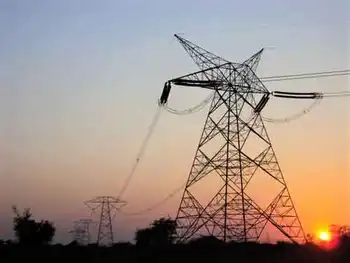Simple Ways To Save On Power
New York - - Are you hot under the collar about rising electricity bills? They've been climbing this summer due to the heat and other factors.
Here is advice on how to save energy dollars.
HEATING AND COOLING
Heating and cooling account for 48 percent of your energy bill, so they represent a good target for potential savings.
Actionable tips:
Program your thermostat to turn air-conditioning (or heat in the winter) down when you're out, or consider turning off your air-conditioner on cool summer nights. Instead of setting your thermostat to 70 degrees in the winter, set it to 65, and you'll save $80 to $100 a year.
If your furnace is more than 10-15 years old or your boiler is more than 20 years old, replace it with a government-approved, efficient Energy Star model.
These steps, combined, could save you some $500 a year.
Real Simple green point:
If one household in ten bought Energy Star-rated heating and cooling equipment, the change in greenhouse-gas emissions would be equivalent of taking 1.5 million cars off the road.
LIGHTING
Lighting only accounts for about 5 percent of your energy bill, but you can still save about $90 a year with a few simple steps.
Actionable tips:
Replace regular, incandescent bulbs and fixtures with Energy Star-qualified compact fluorescent lights (CFLs); they use 70 percent less energy and last longer (10,000 hours compared to 750). By replacing a 75-watt incandescent bulb with an 18-watt CFL, you can save 5 cents an hour, or $88 a year.
Install dimmers on all bulbs to save energy and extend their life. Timers also work well for front door and security-related lights. For outdoors, lights with sensors are ideal; you can even find energy-free solar-powered ones. For instance, log on to www.solarilluminations.com.
Real Simple green point:
If every American home swapped just five incandescent bulb fixtures for Energy Star CFLs, it would keep 1 trillion pounds of greenhouse gases out of the air and save $6.5 billion in energy costs.
Actionable tips:
Ideally, unplug or turn off your computer when it's not in use. If you can't do this, use its power-saving sleep mode, which uses 60-80 percent less energy than full-power mode. At the very least, turn off your monitor rather than using a screensaver.
Unplug plugs attached to a black transformer box, such as your cell-phone or digital camera charger. If they're plugged into an outlet, they're sucking up electricity whether they're charging a device or not.
These steps could save you as much as $175 a year.
Real Simple green point:
Using power management on your desktop computer could save 900 kilowatt-hours a year. That amounts to 1,500 pounds of carbon dioxide emissions, the equivalent of driving a medium-size car from New York to Salt Lake City.
APPLIANCES
Actionable tips:
About 80 percent of a dishwasher's energy use goes to heating water. Select "unheated air-drying" to cut that by 12 percent, or about 10 cents a load.
Replace a top-loading washing machine with a front-loader, which generally uses 50 percent less energy and a third less water. With savings of as much as 40 cents a load, it will pay for itself in six years and should last for ten. Consider replacing old refrigerators as well: One made before 1993 could cost as much as $140 a year in electricity, while a new, Energy Star-rated model runs on about $20 worth.
Real Simple green point:
A front-loading Energy Star-certified clothes washer saves enough energy annually to light your entire home for a month-and-a-half, and saves as much water in a year as the average person drinks in a lifetime.
These steps could save you some $400 a year.
Related News

UK to End Coal Power After 142 Years
LONDON - The United Kingdom is poised to mark a significant milestone in its energy history by phasing out coal power entirely, ending a reliance that has lasted for 142 years. This decision underscores the UK’s commitment to combating climate change and transitioning toward cleaner energy sources, reflecting a broader global movement away from fossil fuels. As the country embarks on this journey, it highlights both the achievements and challenges of moving towards a sustainable energy future.
A Historic Transition
The UK’s relationship with coal dates back to the Industrial Revolution, when coal was the backbone of its energy supply,…




